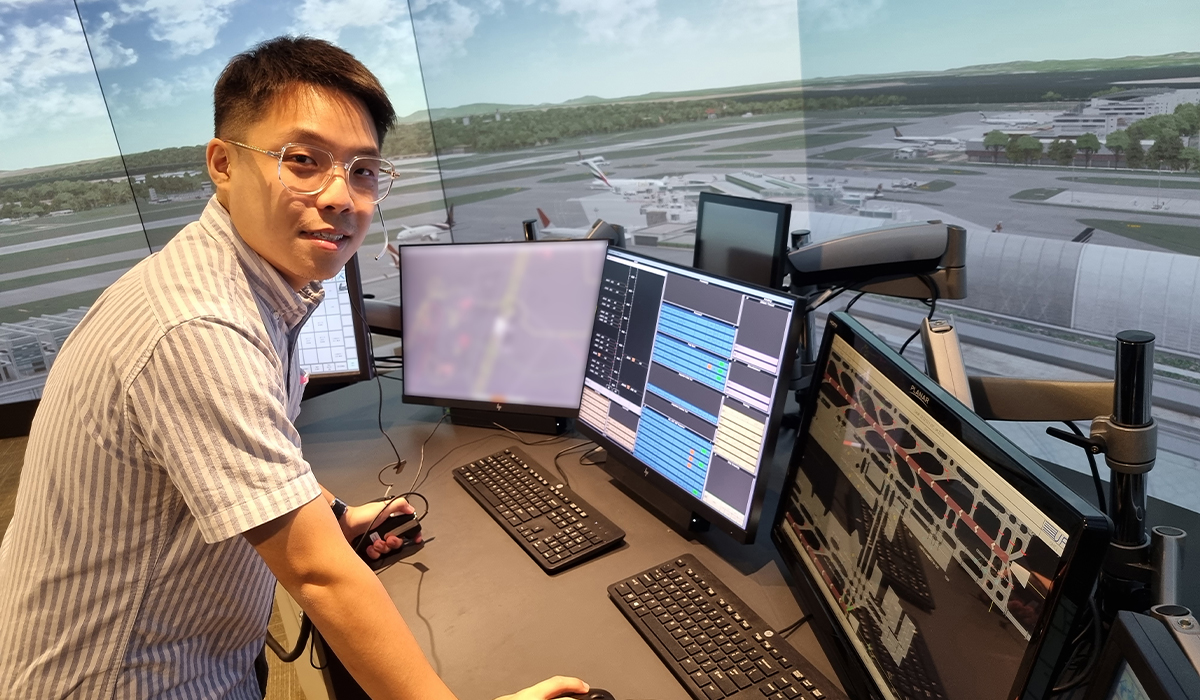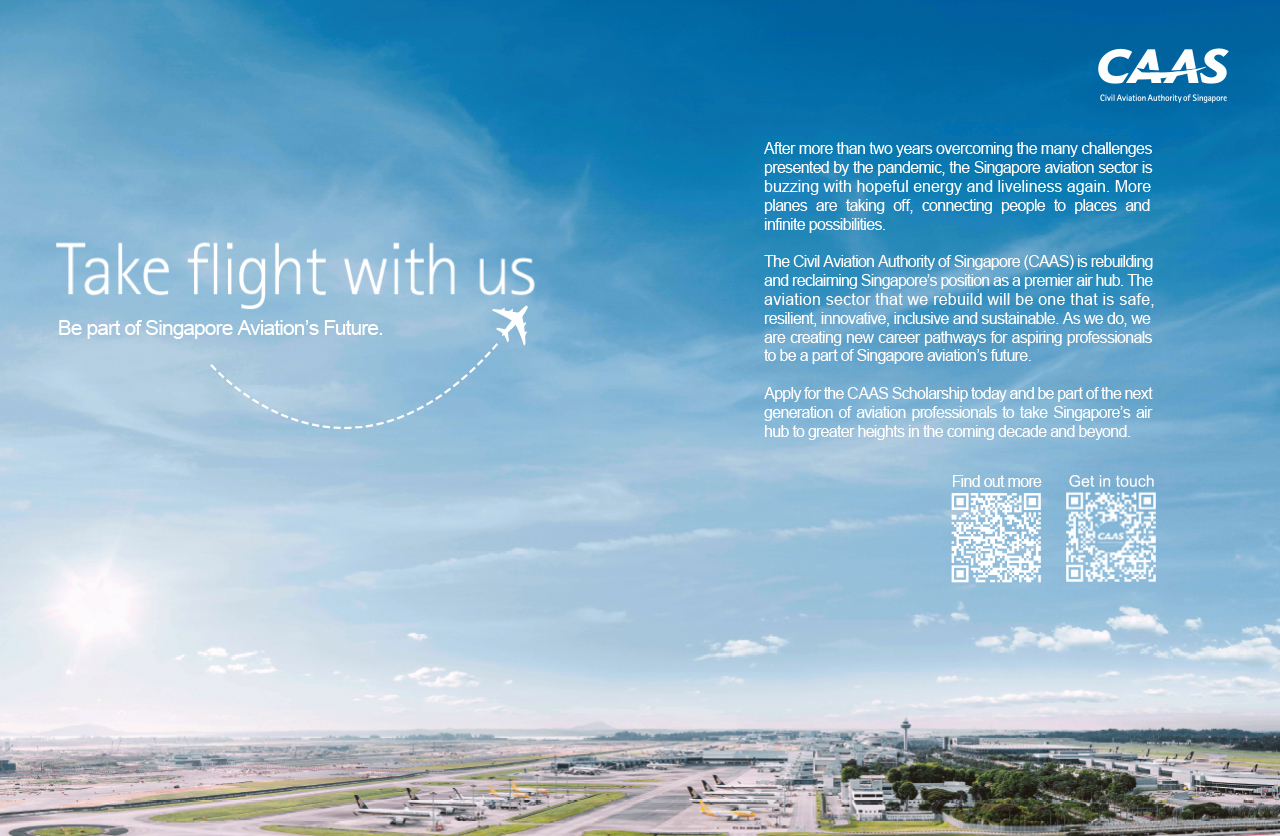Keith Low Jun is a recipient of the CAAS Local Undergraduate Scholarship and holds a Bachelor of Computing (Computer Science) from NUS. He works as an Assistant Manager of Air Traffic Management and is currently undergoing training to be an Air Traffic Control Officer.
Keith Low Jun is an Assistant Manager (Air Traffic Management) at CAAS. His aviation fascination was kindled by watching aviation documentaries, where he began to appreciate more deeply the crucial role Air Traffic Control Officers (ATCOs) play in keeping the skies safe. This sparked his interest in taking up a career as an ATCO. To follow his passion, Keith obtained the CAAS Local Undergraduate Scholarship and pursued a degree at NUS, majoring in Computer Science. Currently, he is undergoing ATC training at the Singapore Aviation Academy to obtain the ATCO licence.
We had a chat with him to explore his remarkable journey at CAAS.
Tell us more about the CAAS Local Undergraduate Scholarship. Why did you choose to apply for it?
I discovered it through BrightSparks during my Junior College days. I realised that applying for the scholarship would allow me to marry my interest in aviation and air traffic management with exposure to the real business world through internship opportunities and engagement sessions with CAAS Senior Leaders. The summer internship I did at CAAS in Air Traffic Management affirmed my interest in this field by working alongside experienced managers who imparted to me their insights into the work of CAAS and beyond. Having the monetary sponsorship for my undergraduate studies was a nice perk as well!
That’s great! How have you been able to apply what you learnt at university to your work and training?
The skills that I picked up in university have been applied in several ways. Firstly, attention to detail. In programming, we are trained to spot errors and inconsistencies in codes. Trained with an eye for detail, this skillset is applicable in areas where we are required to identify potential errors in critical information. Secondly, as an ATCO, we are required to make quick decisions based on available information. As a Computer Science student, we were taught to tackle issues by breaking complex problems down into smaller ones. This has helped me to make informed decisions when working under high-pressure situations. Thirdly, effective communication skills to communicate complex ideas in a clear and concise manner with pilots and foreign ANS Provider counterparts is critical.

Keith Low Jun
What does a typical day of training to be an ATCO entail?
The Air Traffic Control profession is a highly dynamic and challenging one. It demands a high degree of alertness, confidence, and decisiveness. As an ATCO trainee, we are put through a 12-week primary course where we learn about the theory and systems behind air traffic control and management.
As we progress to the next stage, the theory learnt will be put into practice at the simulators. Each simulator session comprises different stages to learn about managing emergency situations or adverse weather conditions. It is undoubtedly challenging, but I am fortunate to be surrounded by committed and supportive instructors and like-minded fellow trainees.
The training also exposes us to state-of-the-art technology to handle aircraft movements safely and efficiently. The training helps to prepare us for the roles which we will be taking up in the future.
What about your work most excites you?
What excites me most about this job is how dynamic it is. No two situations are ever the same, as every shift, whether day or night, brings about a different set of conditions and challenges at work.
With new technologies on the horizon, as we develop the next generation of Air Navigation Services system and the opening of Terminal 5 to expand Singapore’s capacity and strengthen Singapore’s position as a global aviation hub, I envisioned myself taking on exciting roles where I can shape and contribute to the ever-evolving aviation landscape.
That’s amazing! What possibilities await those working at CAAS?
At CAAS, opportunities abound for scholars to explore diverse roles and gain exposure both locally and internationally. Scholars are given the opportunity to stretch and develop their capabilities in a nurturing and supportive environment. The possibilities are unlimited, so it is up to scholars to decide what they are really looking for and what specific career goals they hope to achieve. It could be self-development, policymaking on a national level, or even international work exposure. It could also be any combination of these and more. But for those who are unsure, my advice is that it never hurts to try, and CAAS is a great place to grow.



